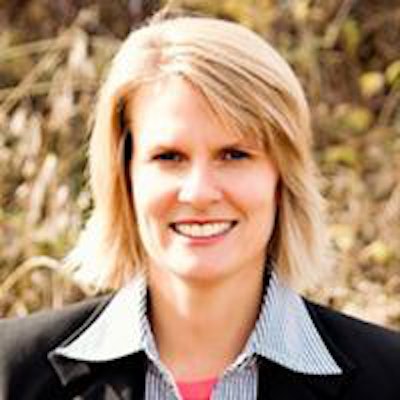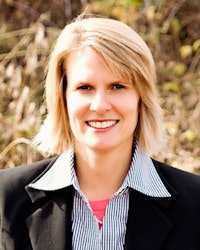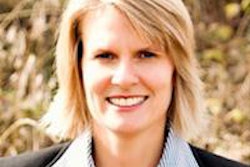
Lisa Knowles, DDS, continues her series on growing a practice. In this column, she explores the theme of separation and how it can help your practice. She offers practical ideas for observing your staff, making adjustments, and making an impact with your words.
Separation is hard. People want to be together -- most of the time. Yet, leaders often notice first when something is not right -- when something needs to be weeded, thinned, or separated.
 Lisa Knowles, DDS.
Lisa Knowles, DDS.Most leaders face difficult decisions.
My early lessons in separating came from nature. I struggled with thinning out or separating growing seedlings. As crazy as it sounds, I still hate to thin my growing garden of vegetables. But, that's what the seed packet says to do: Plant the seeds and then thin them once they take root. I wonder if I am choosing the right ones to remove. I feel a bit of pity for the ones that are discarded.
And, what will happen if I don't thin them? I get small, unproductive produce. This year, I finally thinned my radishes enough to yield decent-sized results. In previous years, I failed to remove enough of them in between one another. This caused me to get spindly, little radish roots that amounted to nothing. I learned.
I learned this in my business, too. When I started to hire my team, I chose people I liked. I chose outgoing, friendly personalities. I chose people like me. Eventually, I realized we were not getting the results I wanted. We were too much alike. Outgoing, extraverted types tend to focus on people. We needed team members that could focus on numbers and details. We needed to separate the similar personalities and diversify our team.
This awakening nearly killed me for two reasons:
- I dreaded the thought of firing someone.
- I hated to admit that my original hiring theory did not work well.
Today, I watch other dentists struggle with this similar situation -- only many of them choose to "watch and hope." This watch-and-hope method leads to further and more difficult decisions later on. Similar personalities and attitudes take over the garden workplace, and more deeply rooted work patterns emerge. The dentist or leader then finds it hard to get things moving or growing in a new direction.
“A team with diversity in thought and skills is able to work through difficult challenges together.”
Noticing when too many employees have the same root structure is not enough. We actually have to separate some of them. It's an unpleasant side to being the boss.
What happens if we do not thin and separate? We get an undiversified group of people with similar problem-solving skills, similar reactions, and similar thoughts. At first, this sounds desirable, and it seems like everyone might get along because of so many similarities. It's good for a gathering of friends on New Year's Eve, but not so good for a productive and prosperous business. Businesses need all types of personalities -- especially ones not like our own.
Preventing overgrowth
How do we prevent this overgrowth of similarities in the first place? Consider the hiring process very carefully. Know the skill sets and preferences of your current team members. Take the time to understand their personality types. Many personality tests exist. Some of my favorites are the DiSC and Meyers-Briggs testing programs.
Then, hire accordingly. Know needed traits before the first interview. That way when the nicest, funniest, most outgoing person comes along, you can tell them, "No, sorry we cannot hire you." Unless, of course, that is the person you are looking for.
A team with diversity in thought and skills is able to work through difficult challenges together. When we get too much of one type, we reduce our chances of meeting the needs of our diverse patient population. We become too alike to be able to understand a different perspective. Therefore, we lose patients and opportunities, because we convince ourselves that it's the other person's fault for not understanding our culture. Realistically, it's our monolithic culture that is at fault. We cannot think like others to the depth needed to tolerate differences. This comes across as unfriendly or inflexible to patients, and we lose our likability factor.
Creating a diversified team is difficult. I am not going to sugar coat that for you. At times, a warm body with average skills looks really good in the hiring process after working short-handed for a week or two. But, it behooves the entire team to work even harder to find the right fit, not just any fit. Otherwise, we end up weeding, thinning, and separating over and over again, because we do not have the right people in the right places. We get small, unproductive teams with low yields, and we get frustrated with our results, despite an inordinate amount of energy already spent.
If it's time for your team to separate, get it done. Pull the weeds. Thin the overgrowth. If we watch and hope for change, we often hinder the development of others on the team. A careful leader will observe what the team needs and create room for others to grow. Though somewhat painful, it is often necessary to separate and replant team members.
We all need space to thrive. And, all organizations need leaders willing to make difficult decisions.
Lisa Knowles, DDS, is the founder and CEO of IntentionalDental Consulting. For more information, contact her at [email protected] or 517-331-3688. Visit her blog site at Beyond32Teeth.com or website at IntentionalDental.com.
The comments and observations expressed herein do not necessarily reflect the opinions of DrBicuspid.com, nor should they be construed as an endorsement or admonishment of any particular idea, vendor, or organization.



















